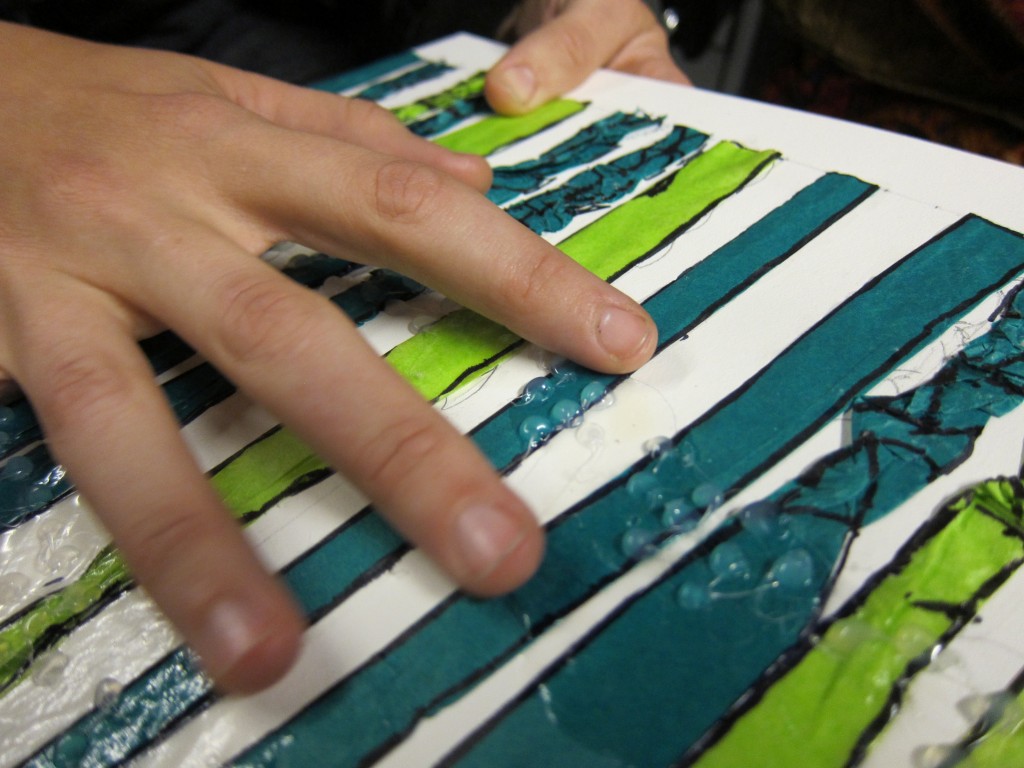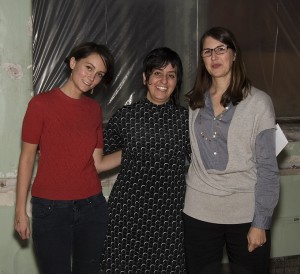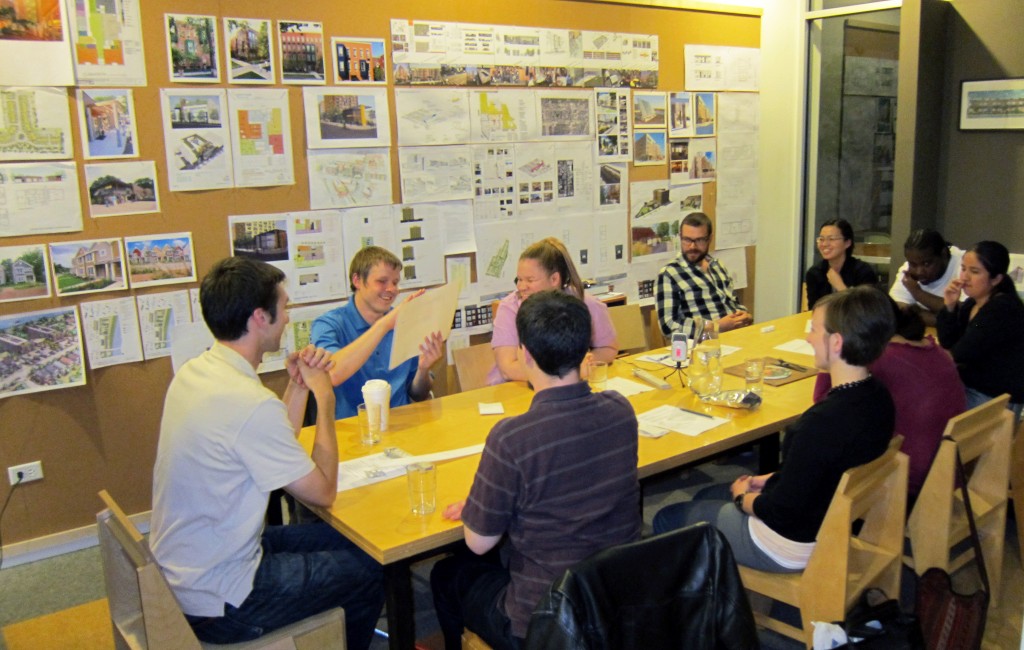GARLIC & GREENS was featured in Turnstyle magazine! Check it out here:
http://turnstylenews.com/2012/01/24/interview-chicago-artist-fereshteh-toosi-explores-the-definition-of-soul-food/
Archive for G&G
Turnstyle interview
TCF Meal By Meal Seed Grant
We are the proud recipients of a Meal by Meal Seed Grant from the Tasting Cultures Foundation! Check out their interesting foodways programs at their website: http://tastingcultures.org/
THANK YOU TCF!
Propeller Fund
A few weeks ago GARLIC & GREENS received a generous award from the Propeller Fund. Below you will see us at the award ceremony that took place during Chicago’s MDW Art Fair. I’m so honored that GARLIC & GREENS is included with some of the best participatory, public projects happening in Chicago. Check out the Propeller Fund website to find out more about the other independent creative endeavors that have been recognized by this special granting scheme. THANK YOU PROPELLER FUND!
Soul Food Junkies
The new Byron Hurt documentary called Soul Food Junkies has been making the rounds on the internet as it pushes its fundraising campaign to finish production. GARLIC & GREENS did a couple wonderful interviews this week and we are starting to see (and hear!) some overlap with this film’s focus on food and nutrition. Check out one of the trailers here:
tactile design, continued
Last week, the tactile design workshop participants had the opportunity to share their work with the team of other students and facilitators at Archeworks. We asked our sighted audience to use blindfolds to experience the illustrations. This is one of the experiential research methods we used during the tactile design workshop before beginning our design process. In a previous post I shared some observations from Megan and Will about their experience with the tactile design workshop. Below we continue with reflections submitted by Grant Haugen and Cleo Ngiam.

Members of the Archeworks school wear blindfolds to experience the tactile designs created by the students. Photograph by Ryan Wilson.
Grant writes:
Not being trained as an artist or architect, I came into this workshop fully fascinated with the possibilities of what I could learn going forward. At our first session, we were all blind-folded and had to separate a dozen samples of sandpaper, placing them in degrees of roughness from least-rough to most-rough. I quickly had to rely on my tactile senses to decipher the minute differences required to put them in order. Although I love touching interesting and/or soft textures, I had never really thought too much about relying exclusively on my other senses. This was compounded with a reading that Will mentions (see previous post, below), in which we learn that it’s only until recently that our society has become so vision-centric. A few days after this reading, I was driving through the suburbs to go to Wisconsin. Although I loathe suburban areas for their car-dependency, I had never once thought about how difficult it would be for a visually impaired person to get around. There aren’t too many sidewalks or people on the street willing to help the person if they are in a situation in which they need it, nor is there a stellar public transportation network making it easy for them to get around.
On our last day of the workshop, we had a focus group come in to have them feel our final projects and obtain feedback. I was nervous as to how much detail I should include on what I wanted to present as I was trying to illustrate what scent feels like. Not only did I have items to touch, I also included three very different and strong scents. I had such a thrill watching the focus group participants interact with my piece and have fun. I was told that it was multi-sensory, which made it exciting and accessible for all of the participants, which underlies Richard’s comment on never having too much detail on something.
One great point that was brought up was that most art museums are quite boring for visually impaired people as they are unable to always make out what they should be looking at, and at most museums, you’re not allowed to touch the artwork. We were told that children’s museums are quite fun as they’re very interactive and focus much on touch.
Although this workshop lasted a mere six weeks, it truly changes the way I use all my other senses than vision. I wear glasses, and since I have a hard time seeing without wearing them, I tend to take them off only when I’m sleeping or in the shower. Since the workshop, I’ve been taking off my glasses while in yoga, forcing me to rely much more on listening to my body and what the instructor is saying. I’m not busy focusing on how other yogis are doing their position, or watching the teacher to see the ‘perfect’ form of whichever particular pose we are working on. I feel that the intention I bring with me is much deeper and I’m able to understand my body much more.
The way I perceive the built environment and spatial design of the city are changed going forward. There are so many things that can be done to enhance the quality of life in cities for all types of residents. I’ve been intrigued on the use of sound and hope to learn more on implementing public sound installations as I move forward in my urban design and planning work.
This workshop was instrumental in expanding my capacity to make great cities!

Illustration for an asparagus recipe found in the book GOOD THINGS TO EAT by Rufus Estes, published in 1911. Tactile design by Megan Gallagher.
Cleo writes:
How do you make your audience feel home?
How do you transfer an emotion to a graphic?
How does a tactile graphic add to the emotional and visual connection to an audio?
The answer is: I don’t know.
Throughout the whole workshop, we kept throwing around questions, contemplated on them and even tried to find ways to empathize.
But how do you let go of a sense that’s inherent to your perception of life?
The answer is: I don’t know.
It seemed that as we explored the different ways to relate stories and recipes to the viewer, it triggered others to share their own stories and recipes as well.
That was what captivated me the most. It seems that regardless of your ability or disability, food traditions are something that we have all inherited and continue with our own tweaks and personal touches. We all know how it feels like when you’re watching a close one cook for you. We can relate to steam fogging up the moisture of your face when a plate of good food is placed in front of you. We understand that the weight of the food is often disproportionate to the weight of our stomachs after consuming large amounts of food in a short amount of time.
So perhaps it wasn’t just about displaying the food traditions of someone else, but how we carry out our traditions to other people and establish our own as well. The tool we create is not just a tactile graphic, but an heirloom that encapsulates our memories, our superstitions, and our cooking stains when passing on that food tradition.
tactile design workshop
For the past few weeks, I’ve had the pleasure of working with a talented team of students during a tactile design workshop I have been facilitating as part of my research fellowship at Archeworks design school. I’m sorry to see the workshop conclude as the students were wonderfully creative and their input has proven invaluable for the future of the project. So I’ve invited them as guest bloggers to share their experiences with you. Our first reports about the class are authored by Megan Gallagher & Will Cwik:
Will writes: The tactile design workshop began with two classes aimed at opening ourselves to new ways of experiencing the world and to understanding the role that touch plays. During the first exercise, we were blind-folded. We were asked to feel and describe objects to each other that we had not seen before. I found it difficult to understand the object from the descriptions of shape and texture from other students. Being able to hold the object for myself made it clearer to me what it was. From a reading we has called Eyes of the Skin by Juhani Pallasmaa I learned that a society centered on the visual sense is a relatively recent occurrence and that the other senses played the dominant role throughout history. Using this knowledge, we created one tactile graphic based on a recipe from a historical southern food cook book and one based on an interview discussing food history. The tactile graphic made for the interview was critiqued by a focus group of people with low and no vision. While there were sometimes contradictory opinions on our pieces, for example if the picture of the food should be textured or not, an important point was made that there can never be too much detail.
“…you can never have too much detail to something, but you can have too little.”
Rich Schultz, focus group participant
Megan elaborates on this lesson about detail: Upon completion of the 6 week tactile design workshop for Archeworks, we had the opportunity to show our projects, which were a culmination of discussion and exploration in tactile graphics and food stories for a group of 6 people who had low to no vision. The projects were tactile illustrations of stories told by people with a relationship with soul food, whether that was a cook or a group of people who grew up eating it. The process of creating an illustration from a specific idea was not a new one for me. The process of taking a two dimensional idea and bringing it into a three dimensional realm was also not new for me. The process of creating an illustration that would to communicate as art without the use of sight seemed part of a world very foreign to me and a concept difficult for my mind to wrap around. Our critics’ feedback was invaluable.
The variety of projects presented appealed to the variety of tastes of those experiencing them – images and colors for those who had low vision, braille for those with no vision and scents to all. It was in our discussion that I found my connection to this project and these special people. Our guest Richard’s description of his experience with art provided this for me. He came to the table born with no vision and described his preference to draw in plan and elevation, as drawing perspective and vignettes is a very difficult thing for him. Being in a design community that uses orthographic projection to communicate, I instantly related to ease that comes with understanding something, whether that is an apple, a teddy bear or the facade of a building, through the two dimensional representation of it. As a designer, I take the idea in my head and translate it on paper through plan, section and elevation. It is through these drawings, adding detail or subtracting it and working relationships of different elements, that the idea comes to fruition. I can only speculate that for a person with no visual relation to the world that the touch of an object beings to create these working drawings in their mind.
Richard also mentioned for him that you can never have too much detail too something, but you can have too little. It makes me think that this detail he speaks of is what brings an object from a concept of what it might be to a determination of what it actually is.
“My grandma left the South to get away from this.”
My neighbors and I have started attending a series of workshops hosted by Openlands to help Chicago residents to start a new garden. Our instructor, Julie Samuels, is a long-time community organizer, and it was valuable for me to hear her assertion that people are the most important part of a community garden. During the first class, we heard stories about the challenges and successes of other community garden projects. In some neighborhoods, residents are vehemently opposed to edible food gardens, which inhibits those who are interested from getting them going.
For many people of color, there is a stigma around traditions connected to food and farming. It’s important to understand why. Organizing people around food justice issues means education about the difference between the work of share-croppers and slaves and the labor of contemporary community gardeners who are directly engaged in the livelihood of their neighborhood. With that in mind, it’s also important to acknowledge that many white folks have taken advantage of the growing food and environmental justice movement in ways that replicate the inequities of the past. That’s why community gardens, organized and maintained by neighbors for non-commercial food production, are so exciting. I prefer a cucumber I grew on my own to anything that I could get from someone else, including local farmer’s markets or CSAs. My interest in community gardens are the latest iteration of my long-standing commitment to DIY: they are one of the simplest ways to work towards autonomy.
Pancho MacFarland is a Chicago State University sociologist and member of the Roseland Community Peace Garden. He has written a few posts about this on an environmental & food justice blog. He describes the problem in this post, which I quote from below: http://ejfood.blogspot.com/2011/09/food-justice-in-city.html
Often, middle-class and aspiring middle class Black students run from the culinary and other traditions of their recent ancestors. They connect these foods and labor activities with the hard life in the South.
Another oft-heard remark in the community garden and food justice classroom is a variant of the following: “My grandma left the South to get away from this.”
He goes on to write:
A chorus of students chimed in telling stories that elders in their family had told them about the South. What became evident during this conversation was that none of the complaints about the South during the early 20th century had anything to do directly with agriculture and rural life itself but with the racist apartheid system that controlled Black people’s right to move and degraded or dismissed their skilled artisan or farm labors.
This is a distinction I want to be very mindful about as we proceed with Garlic & Greens. What is the relationship between the stories we are gathering and the movement towards food justice? How can we celebrate soul food history while also acknowledging the lasting legacy of oppression?
Pancho MacFarland will give a free public talk about these issues on 4pm October 20th, at Columbia College Chicago as part of the Cultural Studies Colloquium Series: 624 S Michigan Ave., Collins Hall, Room 602.
International Soup Day Grant
GARLIC & GREENS has put together a video submission for the International Soup Day Grant. The International Day of Soup is a project of an international network of meal-based micro-granting initiatives. Basically, people pay a fixed price for a homemade meal, like soup. This purchase buys them a “vote” to decide which one of the many submitted projects is funded with the pool of money. So if each person pays $10 for the meal and 15 people show up for the event, the chosen project gets $150 dollars to spend. The Soup Grant is a grassroots model for funding small to medium sized creative projects through community meals. Check out our proposal to start a new storytelling event in Chicago:
If you happen to be in NYC, you can cast your vote for the winning group during a group meal at Creative Time’s “Living as Form” exhibit at the Historic Essex Street Market. Here’s a link to purchase your ticket for dinner at 8:30PM on Saturday October 1st: http://www.brownpapertickets.com/event/198302. Bon appetit!
Is soul food disappearing from Chicago?
The tactile graphics workshop is underway and students are working their first assignment this week: an illustration for a recipe from one of two historical cookbooks:
What Mrs. Fisher Knows about Old Southern Cooking by Abby Fisher:
http://digital.lib.msu.edu/projects/cookbooks/html/books/book_35.cfm
and
Good things to Eat by Rufus Estes:
http://digital.lib.msu.edu/projects/cookbooks/html/books/book_62.cfm
One of the students, Alicia, alerted G&G to an intriguing article about soul food in Chicago:
http://www.washingtonpost.com/lifestyle/food/soul-food-disappearing-in-chicago-as-black-population-declines-tastes-change/2011/09/06/gIQA8PxX7J_story.html
The author claims that times are changing and soul food options are not as abundant as they once were. What do you think? Is soul food disappearing from Chicago?
Art & Soul
 Rebecca Zorach’s article “Art & Soul: An Experimental Friendship between the Street and a Museum” was recently published in Art Journal Vol. 70, No. 2. Art & Soul was an experimental art center in Chicago’s North Lawndale neighborhood in the late 1960’s. You can read it online here: http://artjournal.collegeart.org/?p=2104
Rebecca Zorach’s article “Art & Soul: An Experimental Friendship between the Street and a Museum” was recently published in Art Journal Vol. 70, No. 2. Art & Soul was an experimental art center in Chicago’s North Lawndale neighborhood in the late 1960’s. You can read it online here: http://artjournal.collegeart.org/?p=2104


